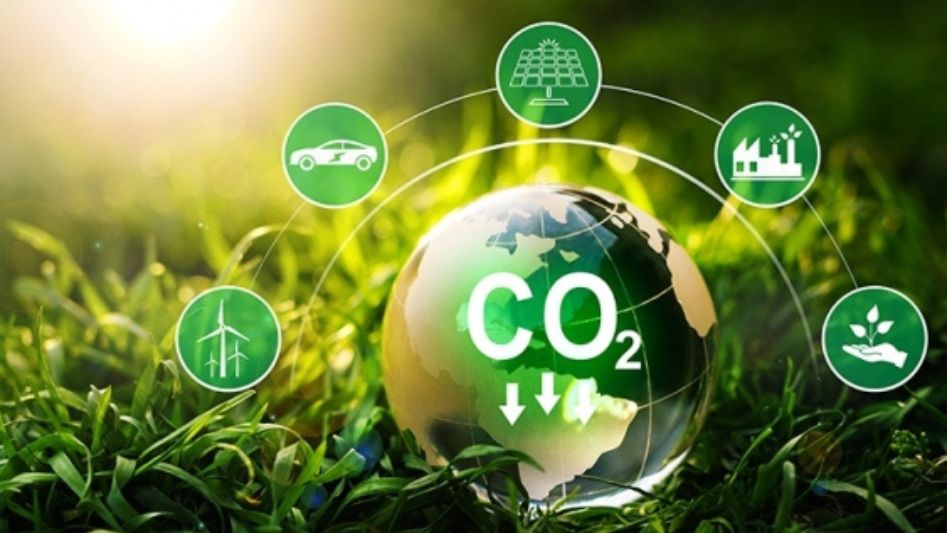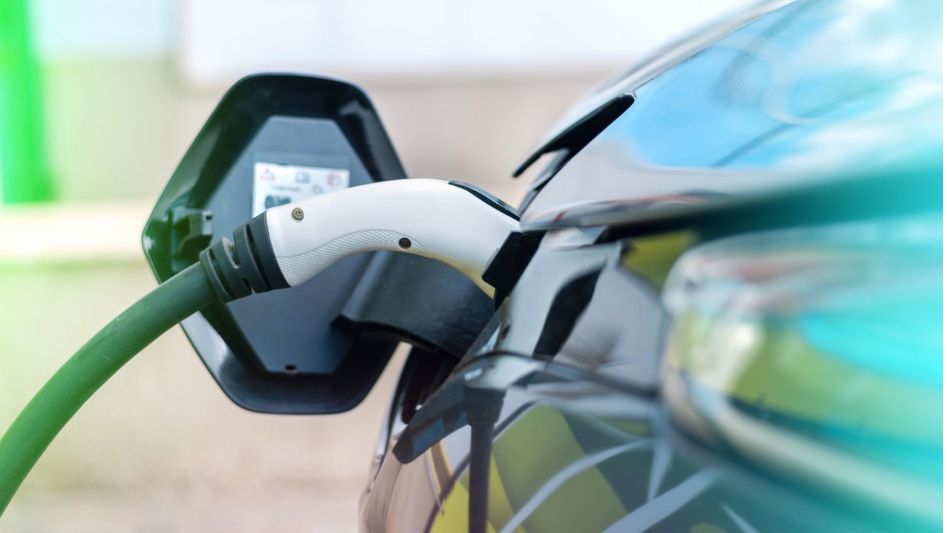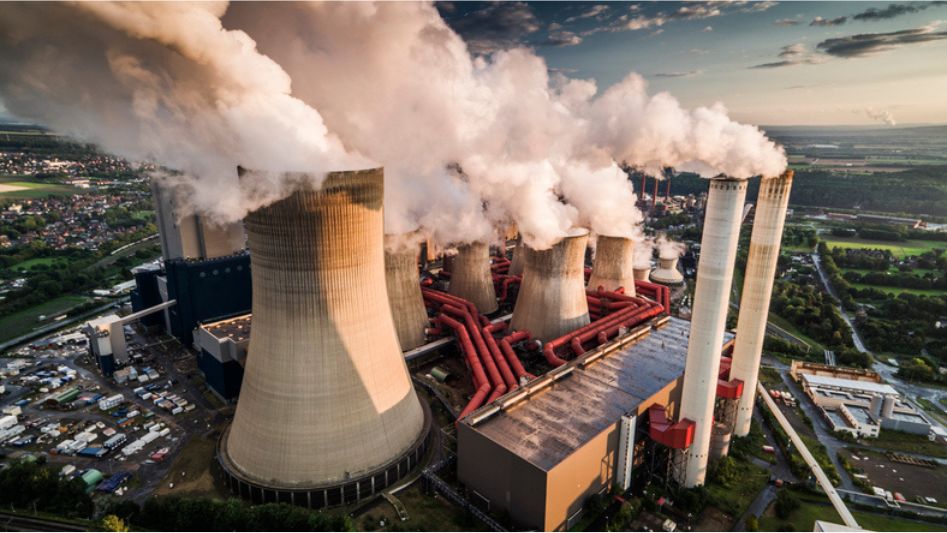In the United States, the Department of Energy has committed to reducing greenhouse gas emissions by half by 2030. This is a critical step in fighting climate change and the US Can Halve Its carbon Emissions by 2030
Table Of Content

Even though you can’t see them or hear them, the United States of America is being propelled into the energy future by enormous, unseen forces. A significant advance in the battle against climate change was the administration of Joe Biden’s promise, made a year ago, to cut greenhouse gas emissions in the United States by half by the year 2030. The experts believe that this goal is attainable, despite the fact that it may seem to be an impossible task.
Several groups have worked together to model the specifics of how this decarbonization could take place—for instance, by increasing the use of solar and wind energy and the number of electric vehicles on the road—and have found multiple routes that would result in a reduction of emissions by fifty percent within the next eight years. In a recent article published in the journal Science, the authors analyzed six of these potential futures and discovered that they had three important elements in common, which are the keys to a future with clean energy. “Reducing our emissions by 50 percent is technically achievable, it’s economically viable, and there are tremendous extra advantages,” says Nikit Abhyankar, an energy economist at Lawrence Berkeley National Laboratory and a coauthor of the report. “There are massive additional benefits,” he adds. This is what we refer to as a “no-regrets approach,” so to speak.
The first point on which all of these hypotheses agree is that our primary focus should be on the electric power and transportation industries. According to Abhyankar, in order to cut emissions in half by the year 2030, the electrical system in the United States would need to be powered by around 80 percent carbon-free energy (including hydropower and nuclear power), an increase from the current percentage of 40 percent. The encouraging news is that our course has already been set in that way. In the last several years, the United States has made tremendous headway in its campaign to replace its reliance on coal-fired power facilities with those that run on natural gas. Although it does emit some carbon, this gas is not nearly as carbon-intensive as coal since it is a fossil fuel.
In the meantime, the prices of renewable energies like solar and wind are rapidly falling. The cost of solar technology has decreased by 99 percent over the last four decades.Additionally, the cost of storing renewable energy for both homes and public utilities is decreasing: Between 1995 and 2018, the output of lithium-ion batteries increased by 30% per year, while their prices decreased by 12% per year.PG&E, a utility company in California, has completed the commissioning of a battery storage system that has the capacity to provide electricity to over 200,000 households for a period of four hours. When there is a power outage, residents who have Tesla’s (very pricey) Powerwall battery may use it to power their homes as well as charge their vehicles, which gives them some independence from the grid.
The grid itself is the most significant obstacle. The transition to renewable energy sources is taking place on aging infrastructure that was built for the production of energy on demand; hence, if more power is required, more fossil fuels must be burned. The eastern and western grids of the United States, in addition to the grid that is exclusive to Texas, make up the United States grid. These grids are only loosely connected to one another. This implies that operators are unable to import significant quantities of electricity from other locations in the event that there is an increase in demand in one area and there is neither sunshine nor wind in that region. The following is an example of the intermittent nature of renewable energy sources: They are essential to the battle against climate change; consequently, the grid was not intended to accommodate them.

However, according to Abhyankar, considering how cheap solar and wind power have become and how much more effective energy extraction has become, this may not be a significant issue in the near future. Even in areas that may not have the same number of sunny days as Phoenix or the same amount of wind as the Midwest, very efficient solar panels and wind turbines can still create enough power to make it worthwhile from a financial perspective. That frees up the possibility of producing environmentally friendly energy locally, which eliminates the need to bring it in from other states. According to Abhyankar, “contrary to the traditional method of designing the grid, in which you would pick the best of the best resources, place the renewable capacity there, and transmit that power great distances,” that tendency has begun altering as a result of the lowering prices. And this may have a significant influence up to around the year 2030. “
Having stated that, he continues by saying that it is not a long-term answer. Because its operators won’t be able to burn fossil fuels to bridge transitory gaps between energy demand and supply, the grid of the future will need to be more flexible if it is going to be powered exclusively by renewable energy sources. (For example, during the daytime hours of a heat wave, people may be using a lot of air conditioners, but there wouldn’t be any sun to power them.) This indicates that the infrastructure has to be redesigned so that it is capable of transporting renewable electricity across vast distances. However, he believes that in the long term, there is simply no option and that we will have to change the transmission.
EVs may also prove to be useful assets for smoothing out power supply and demand by building a dispersed network of vehicle batteries that grid operators could tap into when necessary. This network could be used in conjunction with residential solar panels. Patricia Hidalgo-Gonzalez, head of the Renewable Energy and Advanced Mathematics Laboratory at UC San Diego and not involved in the study, says, “If we could leverage the batteries from electric cars or batteries in houses, for example, or if we could run the rooftop [photovoltaics] of a group of customers and have them coordinate to give a specific service to support our transmission network, that would undoubtedly assist in attempting to manage with intermittency.” Because more and more of our energy comes from renewable sources, this might significantly reduce the strain on the power infrastructure.
The research came to the same conclusion on two more points: the advantages of decarbonization to the economy and to health. The extraction, processing, and combustion of fossil fuels are the three worst possible outcomes for a person’s health at any point in the lifespan of these fuels. According to Abhyankar, making the switch to clean energy has a number of advantages that go well beyond monetary gain. According to what we discovered, this change might also save more than 200,000 premature deaths, in addition to saving over 800 billion to one trillion dollars in other health-related expenditures. For example, when more cars switch to electric power, the air quality will improve, which will lead to fewer people with breathing problems.
The third aspect, on which all of the research that Abhyankar and his colleagues examined agreed, is that price is not going to be the factor that slows down the adoption of renewable energy, batteries, and electric vehicles. According to Abhyankar, “The most important thing is that the cost is not going to be too expensive.” “In point of fact, a number of studies have demonstrated that it may result in considerable savings for customers.” For instance, installing solar panels on a house may be an expensive update, particularly if the homeowner is not eligible for a sizeable tax credit. Yet, in the long term, the homeowner will end up saving money as a result of installing solar panels.
Instead, the difficulty is in formulating the appropriate policies to implement them on a more widespread scale. Despite the fact that Democrats control both houses of Congress and the White House at the moment, they have been unable to pass significant climate legislation. In addition to having positive effects on the environment, the Build Back Better initiative might have boosted production of renewable technologies in the United States. Nevertheless, it was scuttled by Senator Joe Manchin of West Virginia. According to environmental economist Mark Paul of the New College of Florida, “it comes as absolutely no surprise that we’re nowhere near on pace to achieve our aim of decreasing greenhouse gas emissions by around half by 2030.” “I believe that everyone in the climate and policy field is fully aware that we are going to totally blow past those objectives, unless we get significant action in Washington,” he said. “It’s just a matter of when.”
And pretty much everywhere else too, for that matter. For instance, states could be required to source a greater portion of their energy generation from renewable sources. Also, the federal government could give people who buy electric cars bigger tax rebates, and local governments could put money into charging stations for electric cars, especially in low-income areas.
According to Paul, another obstacle is the dearth of qualified workers to install and maintain solar and wind power systems, as well as energy-saving residential technology such as heat pumps. Increasing this workforce could benefit from public expenditures on vocational schools. According to Paul, “this really gives a fairly substantial economic opportunity to revive the American working class who has been suffering.” “All we need is policy to point the compass in the correct direction and make sure that this transformation occurs as rapidly as it can,” the president said.
Conclusion
Our research demonstrates that the subsequent measures that must be taken in order for the United States to meet its climate goal of 2030 are more transparent and more affordable, but in order to do so, new laws must be enacted. It is probable that accomplishing this objective would require the broad use of currently available technologies, which make use of the progression of technology and the accompanying regulations from prior time periods.

FAQ
How much of a reduction in emissions do we need to achieve by the year 2030?
According to the study that was released in 2018 by the United Nations’ Intergovernmental Panel on Climate Change, the amount of CO2 emissions has to be reduced by 45 percent between the years of 2010 and 2030. The IPCC’s most recent scientific findings, which were released earlier this year, are based on the year 2019, and they say that greenhouse gas emissions need to be cut by 43% by the year 2030.
Why is it imperative that we cut our emissions in half by the year 2030?
According to an important international report that came out today, the goal of keeping global warming to 1.5 degrees Celsius will not be possible unless climate action speeds up and gets much more serious.
How much of a reduction in emissions does the United States need to make?
The United States of America increased the climate commitment it made in Paris in 2021, agreeing to reduce its emissions of greenhouse gases (GHG) to levels 50–52% lower than those in 2005 by the year 2030. However, there are still many unanswered concerns about the steps that must be taken to achieve this goal.
What are the potential consequences of our failure to cut down on carbon emissions?
Both the animals that we adore and the ecosystem in which they live will be eradicated, which will result in the extinction of many species. Extreme weather events, including hurricanes, droughts, and heat waves, will become more frequent and severe, which would result in significant health problems and illnesses. A severe decrease in agricultural productivity will very certainly lead to worldwide food shortages and famine.
You May Also Like
- COALITION TO ACCELERATE EV ADOPTION
- THE ‘SUPERHYBRID’ PROJECTS IN AUSTRALIA HELP WITH HYDROGEN GENERATION
- ACTIONS TO ACHIEVE NET-ZERO EMISSIONS IN HONG KONG
- WHAT IS ESG? DEFINITION AND MEANING
- STUDENTS BUILD SKILLS FOR THE CLEAN ENERGY ECONOMY IN 2021 COLLEGIATE WIND COMPETITION
External Links
- The evidence is clear: the time for action is now. We can halve emissions by 2030
- How the US Can Cut Carbon Emissions in Half by 2030, with or without Congress
- How The U.S. Could Halve Climate Emissions By 2030
- How the US can cut its emissions in half by 2030
- Yes, the US wants to cut carbon emissions in half by 2030
